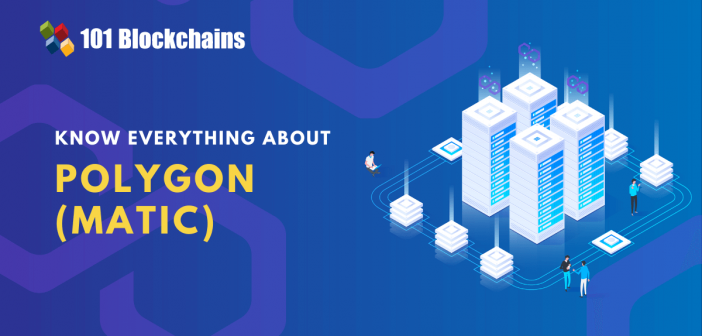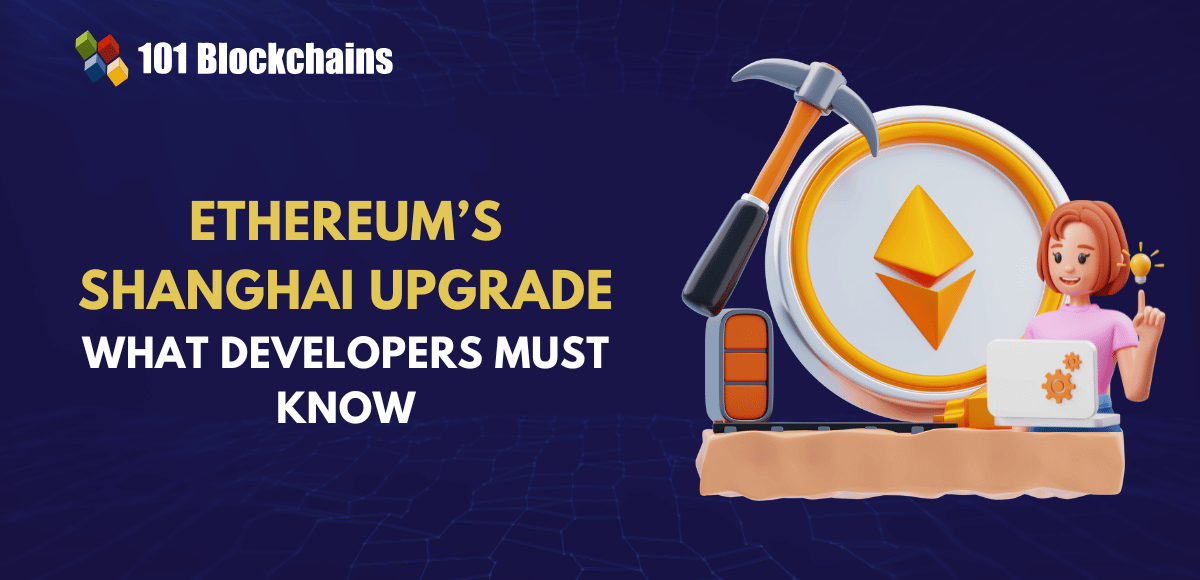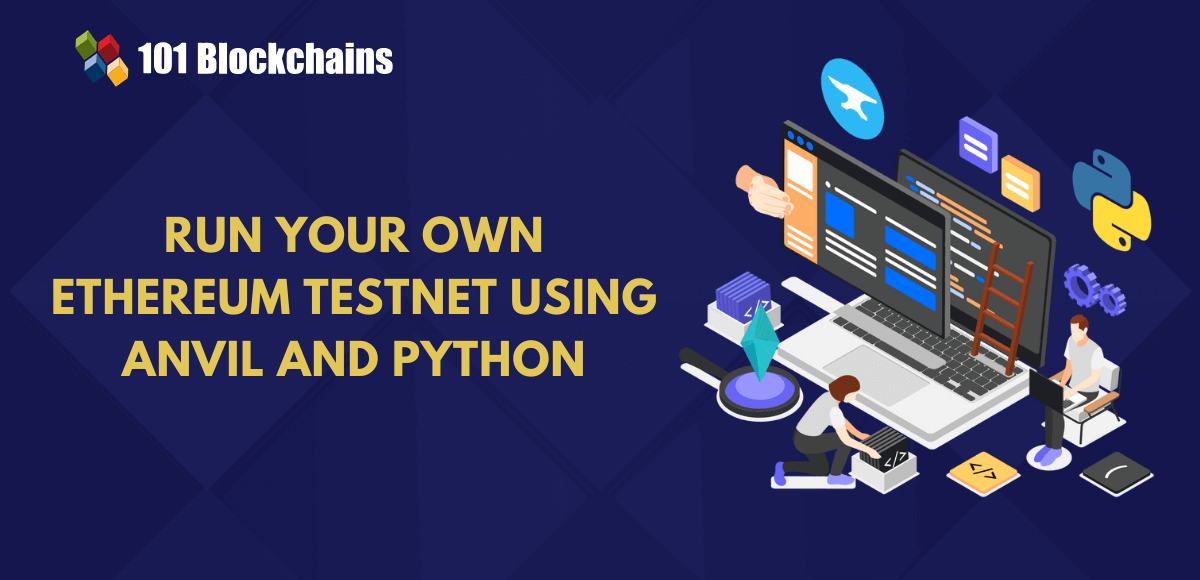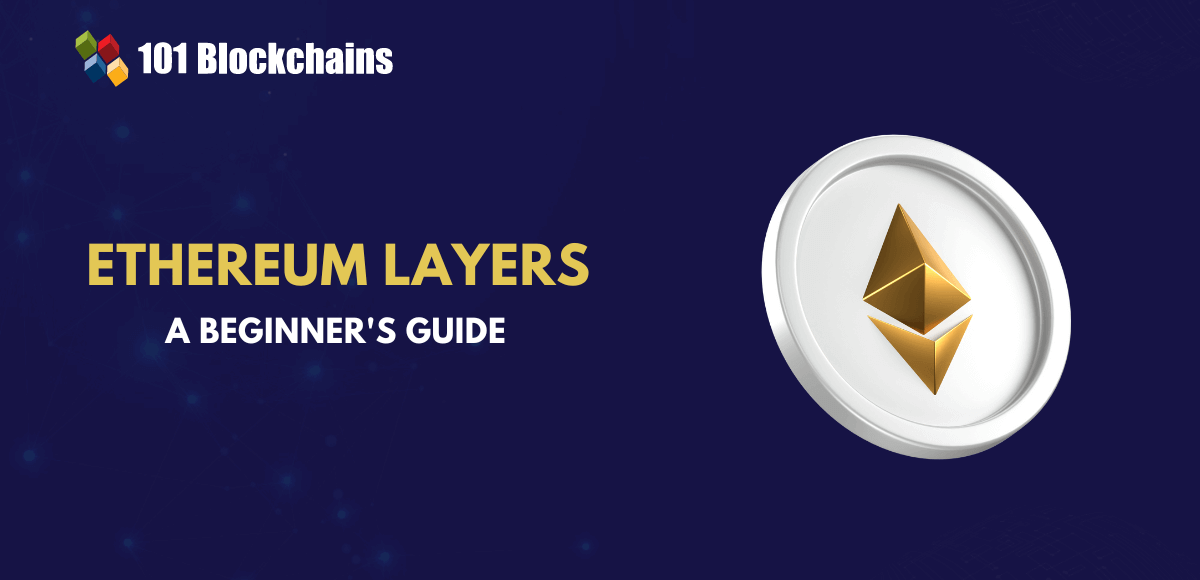Learn how blockchain truly works, master key definitions, and uncover what makes smart contracts so "smart." Dive into the fundamentals, gain valuable insights, and start your blockchain journey today!

- Ethereum
Gwyneth Iredale
- on October 28, 2021
Polygon (MATIC) and its Importance for Ethereum
Wondering what is Polygon Matic and how it works? Here we bring a detailed overview of the various concepts regarding Polygon, let’s dive in.
Scalability has been one of the prominent concerns of blockchain networks all over the world. As the demand for blockchain applications grows further, blockchain networks have to experience high levels of congestion. Therefore, scaling solutions such as layer 2 scaling solutions have been gaining prominence in recent times. The most notable Ethereum layer 2 scaling solution, Matic, went through a makeover in February 2021.
Now, it is termed as Polygon, with the functionalities of an interoperable blockchain scaling framework. Polygon Matic started off in 2017 as the Matic Network and started garnering attention of top players in the world of DeFi, such as MakerDAO and Decentraland after it went live in 2020. The following discussion dives into a detailed overview of what is Polygon Matic, its working, and its value for Ethereum.
Excited to develop a comprehensive understanding of Polygon? Enroll in Polygon Fundamentals Course Now!
What is Polygon Matic?
Polygon Matic or Polygon is just a framework for developing interoperable blockchain networks. The framework primarily focuses on addressing some of the prominent setbacks associated with Ethereum. Polygon leverages a new sidechain solution for addressing setbacks such as lack of community governance, throughput complications, and poor user experience. Therefore, the Polygon Matic Ethereum connection is clearly evident as Polygon is an Ethereum layer 2 scaling solution.
Interestingly, Polygon is not just a basic scaling solution like its predecessor, the Matic Network. On the contrary, it leverages the Plasma technology for off-chain transaction processing before documenting them on the main Ethereum blockchain. So, a better answer for ‘what is Polygon Matic’ would possibly define it as a comprehensive framework for deploying interoperable blockchain networks. Developers could leverage Polygon for launching preset blockchain networks featuring attributes suited to their needs. Furthermore, developers could also customize the blockchain networks with a wide variety of new modules for creating independent blockchains with targeted functionalities.
Beacome an secialize in the fundamental terms and concepts of the Polygon network with Polygon Flashcards
Working of Polygon Matic
The next important concern in understanding more about Polygon Matic would refer to the way it works. As a matter of fact, an understanding of how Polygon works could provide a clear impression of the Polygon Matic Ethereum relevance. What could be a better way to understand the working of Polygon than its architecture? The architecture of Polygon features a four-layer system which includes the Ethereum layer, Polygon networks layer, execution layer, and the security layer. Let us dive deeper into the distinct layers of Polygon’s architecture to understand ‘what is Polygon Matic’ in detail.
The Ethereum layer is a significant element in the architecture of Polygon. It features a collection of smart contracts tailored for implementation on Ethereum. Smart contracts take care of aspects such as transaction finality, communication among different Ethereum and Polygon chains, and staking.
Interestingly, the security layer would run in parallel with Ethereum alongside offering the ‘validators as a service’ functionality. The ‘validators as a service’ role can offer the value of an additional layer of security for blockchains. It is important to note that Ethereum and security layers are optional choices in the case of Polygon Matic.
However, the other two layers are quite significant in the working of Polygon. The first important layer is the Polygon networks layer. It is actually an ecosystem of blockchain networks developed over Polygon. Each Polygon networks layer has its specific community, which manages local consensus and block production. The other crucial layer in the working of Polygon Matic is the execution layer. Interestingly, the execution layer is actually the Ethereum Virtual Machine or EVM implementation of Polygon, tailored for execution of smart contracts.
Build your identity as a certified blockchain expert with 101 Blockchains’ Blockchain Certifications designed to provide enhanced career prospects.
Uses of Polygon
One of the most crucial aspects in developing an understanding of Polygon also points out to ‘what is Polygon Matic used for.’ The most clearly evident answer for the question points out scalability for Ethereum-based applications and deployments. The blockchain networks launched on Polygon feature the capabilities for communicating with one another as well as the main Ethereum blockchain chain.
Interestingly, the arbitrary message passing capabilities of Polygon could easily enable interoperability among blockchain networks on the Polygon network. As a result, Polygon Matic has promising potential for supporting many other use cases like simple value exchange between diverse platforms or interoperable decentralized applications.
It is important to note that the Polygon Matic Ethereum connection is one of the most striking highlights. The framework basically intends to create a future that does not involve different blockchains operating as proprietary communities or isolated siloes. On the contrary, Polygon serves a network where different blockchains could fit together in a broader, interoperable ecosystem.
The long-term answer for ‘what is Polygon Matic used for’ points towards an open, limitless world that allows seamless interaction of users with decentralized solutions. Polygon aims to achieve this long-term objective while also removing the need for navigating through intermediaries or technical know-how barriers. Basically, Polygon wants to develop a hub for connecting different blockchain networks while addressing their individual setbacks.
Excited to develop a comprehensive understanding of Polygon web3 development? Enroll Now in Polygon Web3 Development Course!
Technological Foundation of Polygon
Now, you know about the primary objectives behind developing and using Polygon Matic. It moves beyond the basic functionality of a simple scaling solution to offer a platform for interoperable blockchain transactions. Polygon can help multiple blockchain networks connect together on one platform and resolve their specific setbacks.
Polygon could help blockchain networks resolve the issues of poor scalability, security risks, and high fees by leveraging the functionalities of other blockchains. The magic behind the working of Polygon happens in the technological foundation it uses. Polygon uses a wide range of technologies for achieving its long-term vision, such as the following.
-
POS Chain
One of the foremost technical elements in Polygon Matic refers to the POS Chain. The main chain of Polygon is basically an Ethereum sidechain, thereby showcasing the Polygon Matic Ethereum connection evidently. Previously known as the Matic POS Chain, the POS Chain in Polygon introduces a proof-of-stake or POS security layer for the blockchain networks deployed on Polygon.
-
ZK-Rollups
Polygon also depends on ZK-rollups as one of the elements of its technological foundation. The ZK-rollups are basically alternative scaling solutions used for bundling a large amount of off-chain transfers into a particular transaction. In this case, zero-knowledge proofs work as the final public documentation on the main Ethereum blockchain.
-
Plasma Chains
The extent to which the answers for ‘what is Polygon Matic used for’ can go also depends on Plasma Chains. Plasma is an interesting scaling technology that helps in moving assets between the child chains and the root chain through Plasma bridges.
-
Optimistic Rollups
Polygon Matic also leverages optimistic rollups ideally for offering solutions that would run on top of Ethereum. As a result, they can easily ensure near-instant transactions by leveraging ‘fraud proofs.’
So, the technological foundations of Polygon clearly show that it does not want to settle with a single scaling solution. It wants to integrate diverse scaling solutions for reducing the barriers to entry and transaction fees by considerable margins. Interestingly, the multi-pronged approach followed in Polygon Matic for Ethereum presents a favorable solution for scalability issues.
Want to understand the core concepts of zero-knowledge proofs? Enroll Now in Zero Knowledge Proofs (ZKP) Masterclass Course
Unique Value of Polygon
The explanation on ‘what is Polygon Matic’ would obviously bring scaling and interoperability into the equation. Polygon has evolved as a promising technological foundation enabling better scaling and interoperability with blockchain networks. Most important of all, it is quite important for Ethereum due to its capabilities for addressing some common limitations in interoperability projects like Cosmos and Polkadot.
One of the foremost factors which showcase the Polygon Matic Ethereum relevance is the compatibility with Ethereum Virtual Machine. As a result, Polygon is easy to use for developers familiar with developing applications on Ethereum, with skills in Solidity programming. Polygon presents a better alternative than its counterpart, Cosmos, as the latter leverages a WASM-based virtual machine.
Another important highlight of Polygon refers to the shared security model. The shared security model is completely optional, and independent platforms do not have to sacrifice their sovereignty or flexibility for additional security. Most importantly, Polygon Matic also presents a considerably flexible platform for incorporating any type of scalability solution.
Some of the notable projects which have already started using the scaling technology of Polygon include,
- Aavegotchi, which is a DeFi trading game using non-fungible tokens or NFTs.
- EasyFi is another project based on Polygon, which presents a decentralized lending and borrowing platform providing necessary backing for under-collateralized loans.
How Can You Use Polygon?
Any discussion on ‘what is Polygon Matic used for’ and its value would call for reflecting on the ways for using Polygon. You need to note that Polygon has introduced quite a dramatic perspective on the vision of Matic Network. However, it still uses the MATIC token, the utility token of the Matic Network.
MATIC token is a significant requirement in the Polygon Matic ecosystem for a wide assortment of purposes. It is important for participation in network governance through voting on Polygon Improvement Proposals or PIPs. In addition, MATIC tokens could also help in enhancing security by leveraging staking. MATIC token is also useful for paying gas fees in the Polygon ecosystem. As of now, there is no clarity regarding the additional utility of MATIC tokens in the wider Polygon ecosystem.
How to Start Using Polygon Matic?
You can get started with using Polygon Matic by purchasing a MATIC token. Many cryptocurrency exchanges such as tier 1 platforms or renowned decentralized exchanges can help you purchase MATIC tokens.
How Would Polygon Define the Future for Ethereum?
The Polygon Matic Ethereum connection is highly debated, and many people wonder about whether Polygon fits suitably with Ethereum. Polygon basically serves as a scaling solution with multiple tools that could improve speed and reduce the complexities and cost of transactions on blockchain networks. Interestingly, the core element in the foundation of Polygon’s vision points out to Ethereum.
Ethereum has evolved profoundly as a platform for a wide variety of decentralized applications. Users could leverage decentralized applications based on Ethereum for joining virtual worlds, purchasing art, engage in trading, lending, and borrowing as well as many other financial services. However, the increasing activity on the Ethereum blockchain would clog the network and render it unusable. As a result, Ethereum faces considerable issues such as higher transaction fees and slower transaction speed due to high demand.
Polygon serves as a promising solution for these problems as a layer-2 network. It basically adds another layer on Ethereum without modifying the original blockchain layer. As the name clearly implies, Polygon could offer a simpler yet highly flexible framework for the development of interconnected networks. Polygon Matic could support Ethereum in further expansion with its size, efficiency, usability, and security.
Want to learn about the basics and advanced of Ethereum? Enroll Now: The Complete Ethereum Technology Course
Final Words
Polygon Matic is undoubtedly one of the forerunners for the first blockchain interoperability solution. However, the proof-of-stake chain and Plasma technology of Polygon are yet to go live. As a result, developers could get the confidence to launch their shared or standalone security chains on Polygon.
Without a clear roadmap for its development and the future course action for the addition of features, Polygon is still in the nascent stages. It has a lot of potentials to transform the blockchain ecosystem as we know it with an innovative interoperability solution. Furthermore, the collaborations of the team behind Polygon would also offer the necessary boost for its productivity.
*Disclaimer: The article should not be taken as, and is not intended to provide any investment advice. Claims made in this article do not constitute investment advice and should not be taken as such. 101 Blockchains shall not be responsible for any loss sustained by any person who relies on this article. Do your own research!





